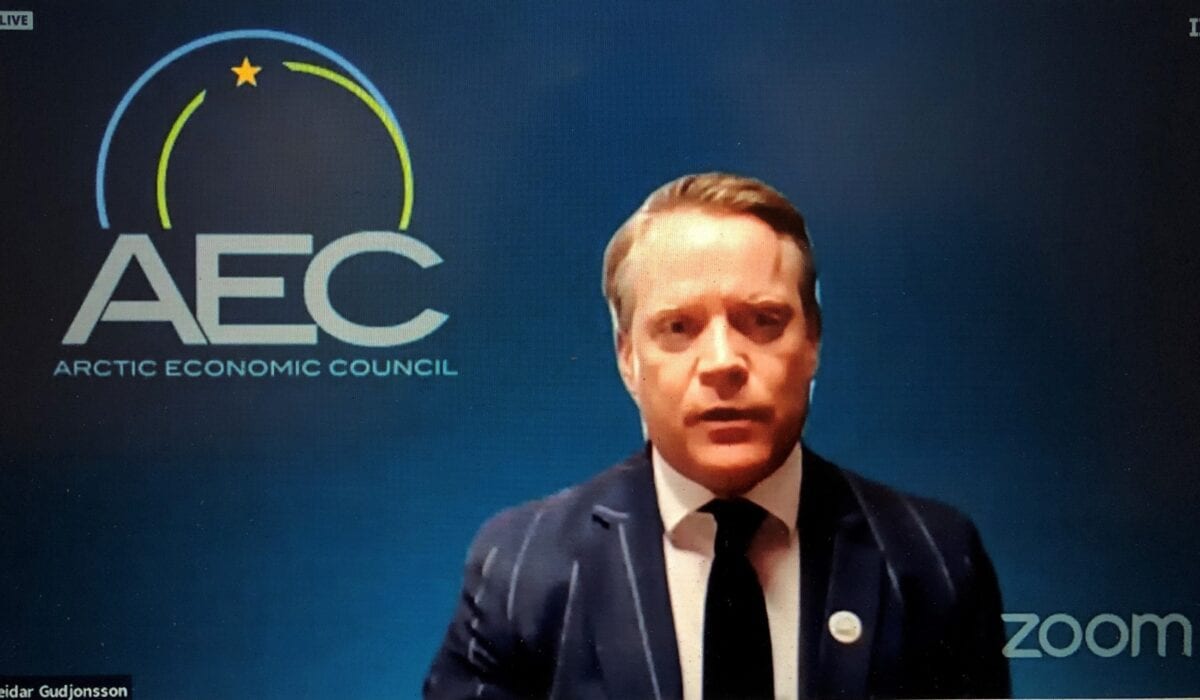
Launch of the Arctic Infrastructure Inventory
The need for Arctic Infrastructure, sustainable economic development in the Arctic and the utility of the Inventory was on the agenda when The Wilson Center´s Polar Institute launched the Arctic Infrastructure Inventory December 2nd. The Arctic Economic Council (AEC) participated as a proud partner.
The Arctic Infrastructure Inventory is a public inventory of current and planned infrastructure projects across the Arctic. The Wilson Center describes the Inventory as a tool to inform Arctic infrastructure – a dataset that’s tracking infrastructure projects in the Arctic and holds an initial 8000 projects, and further additions will be made in the coming year. This will be a resource for all stakeholders in Arctic infrastructure, including policymakers, industry and investors, researchers, community leaders, and more.
– This is of tremendous importance, said Heidar Gudjonsson, Chairman of the AEC.
Misconception of the Arctic
How do we create an environment for viable economic development? How might a tool like the Inventory assist to grow the Arctic that we collectively envision? Asked Mike Sfraga from the Wilson Center´s Polar Institute.
Chairman of the Arctic Economic Council (AEC), Heidar Gudjonsson, was invited to take part in the discussion. He pointed out that the AEC is championing economic development in the Arctic and experience a big information gap in the international society when the Arctic is discussed.
– Our biggest challenge is the lack of information, which leads to a lot of misunderstanding. For example, last year Nike and other companies signed an Arctic shipping pledge where they promised never to transport any goods through the Arctic, even though it would have less impact on the environment than shipping through the traditional routes. This year, several international banks have signed a pledge saying that they won´t fund Arctic oil, gas or coal projects, even though we have the best track record for sustainable development. So, when the AEC is trying to have real discussions with stakeholders we really need tangible information that’s highly accessible, like the Arctic Infrastructure Inventory, said Gudjonsson.
Best Track Record for Sustainable Development
Gudjonsson emphasized the use of the AEC´s Arctic Investment Protocol (AIP) when investing in the Arctic. A tool for businesses and investors to focus on the creation of sustainable societies and business in the Arctic. These guidelines reinforce the need to respect local and indigenous communities, protect the environment, practice responsible and transparent business methods, use of best possible knowledge, and encourage strengthening pan-Arctic collaboration.
– No aera in the world has a better track record for sustainable development than the Arctic, so it´s only natural that we develop this area. The AIP is of great importance when it comes to development in the region, these guidelines reflect why the Arctic has been sustainable developed over the years; because it´s done by the locals, whom are committed to the sustainable development of our societies and resources. The AIP is a tool to bring the Arctic standard to all investments in the region, it´s implementation is relevant to the Arctic and the world for the best for climate, environment, inhabitants and business of the Arctic, said Gudjonsson.
The Arctic Infrastructure Inventory is publicly available here.